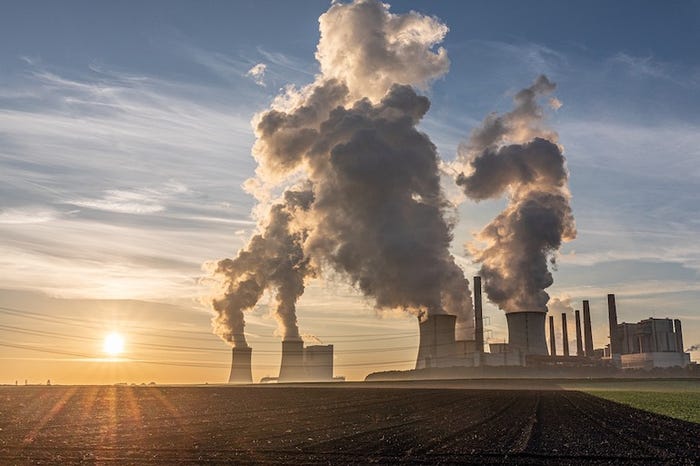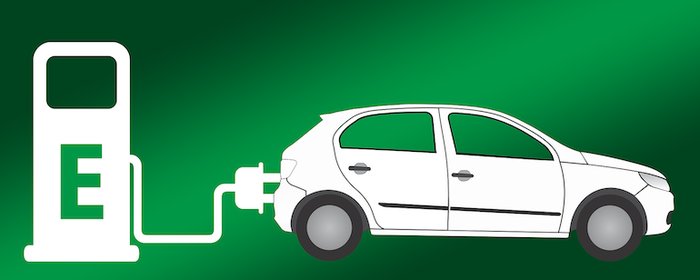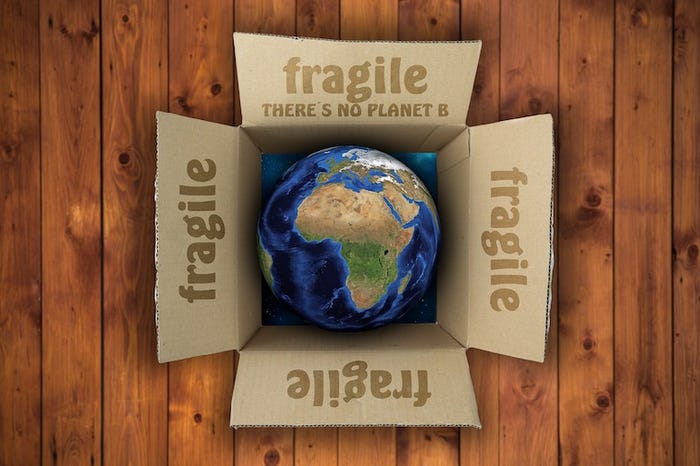Faced with so many challenges, will better battery technology make a difference?
April 22, 2022

In the middle of April of this year the concentration of atmospheric carbon dioxide (CO2), measured at the Mauna Loa Observatory on the Big Island of Hawaii measured 420.49 parts per million (PPM). Last April in 2021, that number was 418.37 ppm. Each year, the amount of CO2 in the atmosphere creeps inexorably higher, fed largely by the burning of fossil fuels for transportation and energy generation.
When the National Oceanic and Atmospheric Administration (NOAA) began collecting data at the Hawaii observatory in the 1950s, the CO2 concentration was around 315 PPM. As the concentration of GHG gases like CO2 increases in the atmosphere, more of the sun’s heat is trapped, causing an overall warming of the planet, forcing the oceans to absorb more CO2 and becoming more acetic, and creating potentially devastating climate changes.
Climate Change Outlook
This month, the Intergovernmental Panel on Climate Change (IPCC) Working Group III released its latest report (its Sixth Assessment Report) on the mitigation of climate change. The report, which is 3,675 pages long, was approved by 195 member governments of the IPCC. It says that global greenhouse gas (GHG) emissions must peak by 2025 for the chance to limit temperature increases to the 1.5°C goal that was set out in the Paris Agreement. Global emissions must then fall by 43% by 2030, as well as a reduction in methane emissions of around 33%, from 2019 levels. Without immediate and deep emissions reductions across all sectors, limiting global warming to 1.5°C is beyond reach.
Hoesung Lee, chair of the IPCC, said in an IPCC press release: “This report is a dire warning about the consequences of inaction. It shows that climate change is a grave and mounting threat to our well-being and a healthy planet. Our actions today will shape how people adapt and nature responds to increasing climate risks.”
It isn’t all bad news—from 2010-to 2019 average annual global greenhouse gas emissions were at their highest levels in human history, but the rate of growth has slowed. There is increasing evidence of climate action, said scientists in the report, and since 2010, there have been sustained decreases of up to 85% in the costs of solar and wind energy, and batteries. According to the report, an increasing range of policies and laws have also enhanced energy efficiency, reduced rates of deforestation, and have accelerated the deployment of renewable energy.
Earth Day 1970
In 1970, Senator Gaylord Nelson from Wisconsin recognized the disastrous effects that oil spills, polluting factories, raw sewage, toxic dumps, pesticides, automobiles, power plants, and the loss of wilderness and habitat were having on the planet. The first Earth Day on April 22, 1970, enlisted the support of Republicans and Democrats, rich and poor, people of all races, the old and the young, farmers and city dwellers, business and labor—and more than 20 million people (a tenth the US population at the time) celebrated.

Greenhouse Gases
But a danger we were only dimly aware of 50 years ago now looms—the emissions of greenhouse gases (GHG) like carbon dioxide and methane, byproducts of the reliance on fossil fuels for energy and transportation for more than a century, are changing the climate of the planet and the chemistry of the Earth’s oceans.
The emission of vast amounts of CO2 comes with the combustion of fossil fuels. Coal, oil, and natural gas are fossil fuels that resulted from the geologic transformation of organic materials (primarily plants) over millions of years and under great pressure. The CO2 that was absorbed by the plants when they were living is stored in the form of fossil fuels and then released when the fuels are burned, adding huge amounts of CO2 to what were once the normal levels of GHGs in the atmosphere.
According to the IPCC, the global temperature will stabilize when carbon dioxide emissions reach net zero. For 1.5°C (2.7°F), this means achieving net-zero carbon dioxide emissions globally in the early 2050s; for 2°C (3.6°F), it is in the early 2070s. The IPCC assessment shows that limiting warming to around 2°C (3.6°F) still requires global greenhouse gas emissions to peak before 2025 at the latest and be reduced by a quarter by 2030.
Limiting climate change will require major transitions in both the energy and transportation sectors. This will involve a substantial reduction in fossil fuel use, widespread electrification, improved energy efficiency, and possibly the use of alternative fuels (such as hydrogen).
“Having the right policies, infrastructure, and technology in place to enable changes to our lifestyles and behavior can result in a 40-70% reduction in greenhouse gas emissions by 2050. This offers significant untapped potential,” said IPCC Working Group III Co-Chair Priyadarshi Shukla. “The evidence also shows that these lifestyle changes can improve our health and wellbeing.”
Batteries to the Rescue
Reducing CO2 emissions from the power sector is possible by obtaining energy from renewable sources such as hydroelectric, wind, and solar. Wind power is becoming a significant factor in the US. Last year, wind was the fourth-largest electricity source behind natural gas, coal, and nuclear. In fact, on March 29, 2021, a record was set for the day when wind was the second-highest source of electricity for the first time according to the Energy Information Administration (EIA). On that day wind turbines generated over 2,000 gigawatt-hours of electricity, edging out electricity generated by nuclear and coal (but still trailing behind natural gas).
Because wind and solar are intermittent, depending on the sun shining and the wind blowing, the electricity they generate must be stored for future use. Pumped hydro storage is the largest form of grid energy storage, accounting for up to 95 percent of all installed grid storage worldwide.
Conventionally, pumped hydropower methods rely on two connected reservoirs that sit at different levels. When the sun is shining or the wind is blowing, renewable energy is used to pump water from the lower reservoir to the upper one, effectively storing the energy. At night or when demand is high, the water from the upper reservoir flows downward, through a water turbine that generates electricity from the flow of the water back to the lower reservoir.
The problem with reservoir hydro systems is that the storage reservoirs require significant space which can have environmental and social impacts.
Lithium-ion and flow batteries are electrochemical ways of storing energy, although at present the leading viable large-scale commercial electrochemical energy storage device is the lithium-ion battery. Practical versions have been around for just over 20 years and today are finding application in everything from cell phones and personal electronics, to medical devices, to EVs, and on large scales to store renewable energy for power grids.
For a long time, the cost of battery storage of renewable energy was considered prohibitive. A decade ago, the price per kilowatt-hour (kWh) of lithium-ion battery storage was around $1,200. Today, thanks to a huge push to develop cheaper and more powerful lithium-ion batteries for use in electric vehicles (EVs), that cost has dropped to between $150 and $200 per kWh, and by 2025 it could be under $100/kWh.
That cost reduction has made lithium-ion batteries a practical way to store large amounts of electrical energy from renewable resources and has resulted in the development of extremely large grid-scale storage systems. In 2021, 1,363 electrical energy storage (ESS) projects were operational globally with 11 projects under construction. 40% of operational projects are located in the US, and California leads the US in energy storage with 215 operational projects (4.2 GW), followed by Hawaii, New York, and Texas.

Transportation
Globally, transportation accounts for 23 percent of GHG emissions, so no surprise decarbonizing the transportation sector is a key target. Electric vehicles (EVs) are seen as being among the most promising paths to keep the planet on a trajectory to remain below 1.5°C of global temperature rise ( compared to pre-industrial times) before the end of this century.
The scale of electrifying the entire transportation system—including personal cars, delivery and heavy trucks, buses, boats, ships, and aircraft—is daunting. Thus far, with only 2 percent of vehicles sold in the US battery electrics (BEVs), the demand for battery raw materials like lithium, nickel, cobalt, and carbon graphite, along with the rare earth elements needed for electric drive motors has been tricky but manageable. EVs are expected to account for 11 percent of global vehicle sales by 2025, and 23 percent by 2030—vastly increasing the demand for the necessary materials.
To maintain the pathway to 1.5°C set out in the UN agreement however will require EVs to account for three-quarters of all new vehicle sales by 2030. A new lithium mine takes at least five years to get up and running. Almost all of the capacity to turn raw materials into battery-ready materials is in China and is already nearing its limits. Building a new battery Gigafactory is a six-year process. Even with an aggressive goal of 25 percent EVs by 2030, transportation’s ability to help limit climate change to less than 1.5°C is going to fall behind.
On the positive side, carmakers and battery manufacturers are putting huge effort into building a circular economy around EVs. By examining every step of the process, from raw materials extraction and processing to transportation to making vehicles and battery packs, to charging and operation, to account for manufacturing scrap, to finally recycling the batteries and optimizing each step to reduce GHG emissions and harmful pollution the industry is transforming itself into a much cleaner more responsible enterprise.
Air Quality—Lives Saved
Aside from the advantages that electric vehicles (EVs) have for reducing climate-changing greenhouse gas (GHG) emissions, a nationwide transition to clean, zero-emission vehicles would also have a dramatic impact on the air quality and the health of US citizens according to a new report by the American Lung Association.
The report called “Zeroing in on Healthy Air” reveals that a widespread transition to vehicles powered by clean electricity sources would result in up to 110,000 avoided deaths and $1.2 trillion in public health benefits across the U.S. over the next 30 years.

Earth Day 2022
The flurry of activity that took place following the first Earth Day in 1970 was impressive. By the end of 1970, the Environmental Protection Agency had been created and the National Environmental Education Act, The Occupational Safety and Health Act, and the Clean Air Act had all been passed. Two years later Congress passed the Clean Water Act, and a year after that the Endangered Species Act. Fifty years later, the air and water are much cleaner than they were in 1970, and the lives of millions of workers have benefitted from safer work environments.
2022 started as a year when real change finally began to take hold. Electric vehicles (EVs) were finally beginning to hit their stride, with more than two dozen models available on the US market. Battery cots had dropped to the point where the dream of price parity between internal combustion engine (ICE) gasoline cars and EVs was finally becoming a reality. Coal was on its way out and the biggest winner in new energy generation growth was wind power.
In February when Russia invaded Ukraine. Aside from the humanitarian catastrophe that the invasion has caused because Russia supplies vast amounts of energy in the form of oil and natural gas to Europe and is a major supplier of the raw materials that are used in the production of EVs, the World’s economic stability has begun to unravel.
The Russian invasion of Ukraine is having a dramatic effect on energy markets and the potential growth of EVs. Heating and electricity production in Europe is highly dependent on Russia with about 40 percent of natural gas and 25 percent of oil coming from Russian production. The US doesn’t import any natural gas from Russia and only about 8 percent of US oil imports came from there last year. The European Union has not included Russian energy in its sanctions, however, supplies are still precarious.
Despite low imports of Russian oil, US energy prices have shot up as the price of crude oil has breached $100 per barrel, and prices at the gas pumps have skyrocketed. Instead of looking at increasing gas prices as a way to incentivize more EV sales, many are now pushing for more US production of both crude oil and natural gas—increases that will have negative effects on attempts to reduce greenhouse gas (GHG) emissions that come from fossil fuels, but that oil companies are happy to oblige.
There still appears to be a slim opportunity for us to build an acceptable future, but the window is closing. “We are at a crossroads. The decisions we make now can secure a liveable future. We have the tools and know-how required to limit warming,” said IPCC’s Hoesung Lee. “I am encouraged by climate action being taken in many countries. There are policies, regulations, and market instruments that are proving effective. If these are scaled up and applied more widely and equitably, they can support deep emissions reductions and stimulate innovation.”
We know what to do, and on a broad scale we know how to do it, but will we?
Happy Earth Day 2022!
The views expressed here are those of the author and do not represent the official position of Informa or its subsidiaries.
Kevin Clemens is a Senior Editor with Battery Technology.
About the Author(s)
You May Also Like





